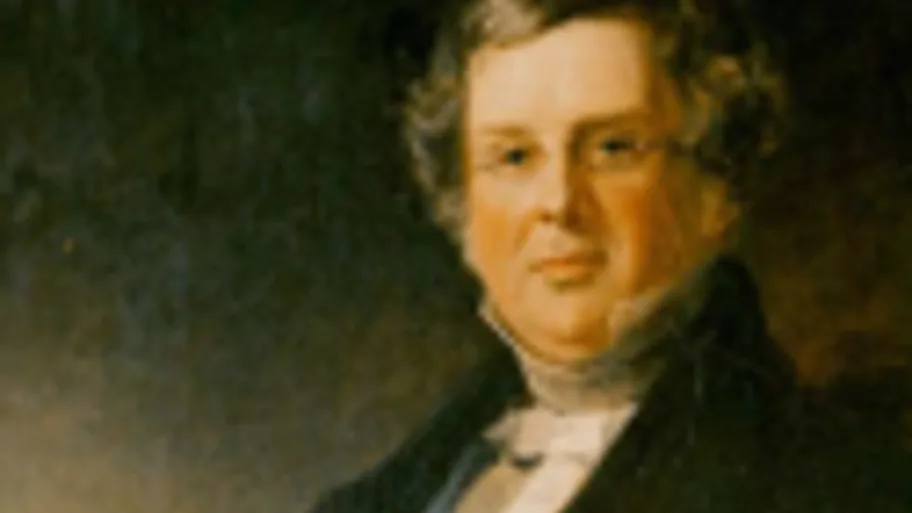
- Science news
- Young Minds
- Jocelyn Bell Burnell – Discovered Pulsars
Jocelyn Bell Burnell – Discovered Pulsars

Jocelyn Bell Burnell. Image by Daily Herald Archive/SSPL/Getty
Frontiers for Young Minds takes you down on a dive into the depths of the historical scientific archives and introduces you to scientists you may have not heard about, but you definitely should! This time, we tell you the story of a scientist who made a major contribution to radio astronomy but got excluded from the award associated with it.
By Anet Rumberg
Jocelyn Bell Burnell discovered pulsars in 1967 while still a graduate student in radio astronomy at Cambridge. Her discovery became one of the most marvelous astronomical discoveries of the 20th century. However, when it came down to awarding the Nobel Prize for her discovery, it went to her mentor instead.
Early life – a life-long astronomer
Born Susan Joyce Bell in 1943, she lived with her family in Lurgan, County Armagh in Northern Ireland. From an early age, she loved her father’s books on astronomy and visits to the Armagh Planetarium, which her father, an architect, had helped design.
Did you know that in the mid-20th century, boys could study technical subjects while girls were expected to study subjects such as cooking and cross-stitching?
However, Bell Burnell’s family challenged these policies which enabled her to study science. Bell Burnell was brought up with the belief that everyone has a right to education, which of course in the 1940s Northern Ireland was met with hostility more than anything else.
Bell Burnell knew before leaving school that she wanted to be a radio astronomer. That led her to go to University of Glasgow, where she was the only female in a class of 50 students.
The discovery of pulsars by a PhD student
After attending University of Glasgow, Bell Burnell went to Cambridge University – one of the top universities in the world - where she yet again had to prove that she belonged.
Her first project, working with her thesis supervisor Anthony Hewish, was picking out compact objects called quasars – a hot topic in the news at the time. The first job for that was to build the radio telescope that would use radio wavelengths to pick out distant objects. There were 6 of them who built the telescope, and it took 2 years.
Hewish said that the array rotated with the Earth, scanning continuously, night and day in the sky. And it was to be operated full time by one person, a girl, a graduate student who helped to build it. Jocelyn Bell.
It was unusual to have a female student on this project. Bell Burnell herself has said that the only other females present were secretaries. At this stage the only people on the project were just Anthony Hewish and Jocelyn Bell Burnell. It was Bell Burnell’s PhD, and it was she who ran the telescope and analyzed the data.
One day, checking on the data, Bell Burnell saw a signal that she couldn’t explain. It wasn’t a quasar, and it didn’t look like any other interference either. To understand what it was she ended up bringing this question to Hewish, who said it was interference. He thought that Bell Burnell had wired up the radio telescope wrongly and that is why the new signal had appeared.
She needed an enlargement to see the signal, so she went out to the observatory and turned the chart on to high speed, and at the appropriate time switched on the high-speed recording, which resulted in a pulsing frequency.
Surprised, she tried to reach Hewish. Once he saw the pulses with his own eyes, he knew it wasn’t interference, and a new research project began. But, with just one pulse it was hard to have a convincing discovery.
A couple of days later, Bell Burnell was in her study, and she saw something similar to the first pulse, and thus 2 pulsars were discovered.
Despite her discovery, Anthony was the one giving talks about this new radio source in the Cambridge University. Bell Burnell looks back and says that she could have been cited more, but she didn’t because she was Miss Bell, the student. It was Anthony Hewish who got asked questions about the scientific finding that was pulsars, whereas Miss Bell was mainly asked personal questions.
What are pulsars and why are they important?
Pulsar is an abbreviation of ‘pulsating radio star.’ Pulsars are compact objects that are about the size of a large city but contain more mass than the sun.
We could say that looking from Earth, pulsars often look like flickering stars. But the light from pulsar does not actually flicker or pulse, and these objects are not actually stars!
At this stage over 2000 pulsars have been detected. Pulsars are important because scientists use them to study extreme states of matter, search for planets beyond Earth’s solar system and measure cosmic distances. They also help to find gravitational waves that can point the way to energetic cosmic events like collisions between supermassive black holes.
From interference to Nobel Prize
In 1974, Bell Burnell, now married and no longer in Cambridge University, heard the news that Prof. Anthony Hewish had won the Nobel Prize for the discovery of pulsars. The prize was given jointly to Martin Ryle, who was the head of Cambridge Radio Astronomy Group.
Sir Fred Hoyle furiously opposed Bell Burnell’s exclusion from the Nobel recognition. In a later interview Hewish himself said that ‘the question was who inspired and conceived it and decided what to do’.
Bell Burnell, however, has publicly stated, in a 1977 interview, that she felt her exclusion was the right decision, based on her student status at the time of the discovery:
“First, demarcation disputes between supervisor and student are always difficult, probably impossible to resolve. Secondly, it is the supervisor who has the final responsibility for the success or failure of the project. We hear of cases where a supervisor blames his student for a failure, but we know that it is largely the fault of the supervisor. It seems only fair to me that he should benefit from the successes, too. Thirdly, I believe it would demean Nobel Prizes if they were awarded to research students, except in very exceptional cases, and I do not believe this is one of them. Finally, I am not myself upset about it – after all, I am in good company, am I not!”
Where is Jocelyn Bell Burnell now?
Despite missing out on the Nobel Prize, Bell Burnell has been highly recognized in many other ways. Since 2007, she has been a Dame (DBE, Dame Commander of the British Empire), was voted one of the 100 Most Powerful Women in the UK in 2013 on Radio 4, and in 2014, was elected as the first woman President of the Royal Society of Edinburgh.
In 2018 she won a Breakthrough Prize, known as “Oscars of Science,” for the discovery of pulsars. After her own experiences as a female, she phoned up the Institute of Physics and asked if they could use the $3 million USD award to provide research studentships for “women, under-represented ethnic minority groups and refugee students to become physics researchers” – and there was no hesitation.
In 2021, she was awarded the Copley Medal – the most prestigious scientific award in the UK, given annually by the Royal Society of London – and is only the second woman ever to receive it. She believes in being a good role model, especially for young women, and is currently a Visiting Professor of Astrophysics at the University of Oxford.
Do you want to read more about the subject of Astronomy and Physics? Have a look at this article from Frontiers for Young Minds.






